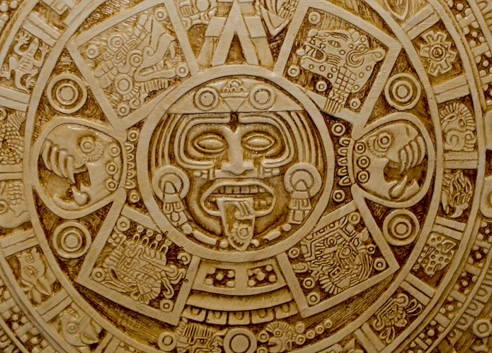Symbols have held immense cultural significance throughout human history, serving as a universal language that transcends barriers of time, geography, and language. From ancient civilizations to modern societies, symbolism has played a pivotal role in shaping culture, tradition, and identity. The intricate meanings and interpretations behind symbols have fascinated scholars, archaeologists, and enthusiasts alike. In this article, we will explore the cultural significance of symbols in ancient civilizations, examining their origins, their roles in daily life, their connections to religious and spiritual beliefs, their implications for social hierarchy, and their influence on cultural identity. Through this journey, we will uncover the enduring legacy of symbolism and its impact on our understanding of the past and present.
The Origins of Symbolism

The origins of symbolism can be traced back to the ancient civilizations of Mesopotamia, Egypt, and the Indus Valley. These civilizations developed complex societies with advanced systems of governance, agriculture, and trade. Symbolism emerged as a means of communication, allowing people to convey ideas, beliefs, and emotions through visual representations. In Mesopotamia, symbols were used in religious rituals, administrative records, and myths, such as the iconic cuneiform script. In ancient Egypt, hieroglyphs became a fundamental part of their written language, used for both practical and spiritual purposes. The Indus Valley Civilization utilized symbols in their meticulously crafted seals, representing their diverse cultural and religious practices. The study of these ancient symbols offers a glimpse into the collective consciousness of these civilizations and the rich tapestry of their symbolic language. To delve deeper into the decoding of ancient symbols, check out our article on decoding symbolic language of the ancients.
Ancient Mesopotamia
In Ancient Mesopotamia, symbolism played a crucial role in both the spiritual and administrative aspects of society. One of the most prominent symbols was the cuneiform script, which was a system of writing using wedge-shaped characters. This script was used to record laws, business transactions, religious texts, and epic poems such as the famous “Epic of Gilgamesh.” The symbols used in cuneiform represented not only sounds but also concepts and objects. The sun was often depicted as a divine symbol, representing the powerful god Shamash. The crescent moon symbolized the moon god Sin, while the eight-rayed star symbolized the goddess Ishtar. The use of these symbols helped the people of Mesopotamia connect with their gods and express their devotion. Additionally, these symbols were employed in various forms of art and architecture to convey meaning and evoke emotions. The ziggurat, a towering temple structure, served as a visual symbol of the bond between the heavens and the earth. Its architectural design emphasized the sacred nature of the structure and its connection to the divine. To explore the evolution of symbolism in art and architecture, refer to our comprehensive article on symbolism in art and architecture evolution.
Ancient Egypt
Ancient Egypt is renowned for its rich symbolism, which permeated every aspect of their society. Symbolism played a crucial role in the religious beliefs, rituals, and funerary practices of the ancient Egyptians. One of the most recognizable symbols from this civilization is the Ankh, also known as the Key of Life, representing eternal life and the union of male and female energies. Another significant symbol is the Eye of Horus, symbolizing protection, healing, and power. The scarab beetle held immense religious and spiritual significance, associated with the sun god Ra and the concept of rebirth. The hieroglyphic writing system itself was highly symbolic, where each symbol carried not only a phonetic value but also a specific meaning. These symbols adorned the walls of temples and tombs, imparting a visual narrative of the ancient Egyptian beliefs and traditions. To explore more about ancient Egyptian symbols and their mystical meanings, delve into our article on shamanic symbols and their cultural significance.
Ancient Indus Valley Civilization
The Ancient Indus Valley Civilization, also known as the Harappan civilization, flourished from around 3300 BCE to 1300 BCE in what is now modern-day Pakistan and northwest India. Symbolism played a significant role in their culture, as evidenced by the intricate seals found throughout their archaeological sites. These seals, made of materials like steatite, depict a variety of animals, humans, and mythological creatures. The symbols present on these seals are not yet fully deciphered, but they are believed to represent the Indus script, one of the oldest known writing systems in the world. The presence of these symbols on seals suggests that they were used for administrative, religious, or ritualistic purposes. Additionally, the city planning and layout of the Indus Valley sites reveal a high level of organization and symbolism. The systematic grid-like street patterns, drainage systems, and standardized brick sizes are symbolic of the civilization’s advanced urban planning. These symbols not only reflect the technological advancements of the time but also provide insight into their social and cultural values. The significance and meaning behind many symbols from the Ancient Indus Valley Civilization continue to elude us, adding an air of mystique and intrigue to this fascinating ancient culture.
Symbolism in Daily Life

Symbols were deeply ingrained in the daily lives of ancient civilizations, permeating various aspects of their society. Rituals and ceremonies held great importance, and symbols played a central role in these practices. Whether it was the sacred use of incense, the ritualistic attire worn by priests and priestesses, or the symbolic gestures performed during sacred rites, these actions were all imbued with profound meaning. Architecture and art were adorned with symbols that reflected societal values and beliefs. Temples, palaces, and tombs were adorned with intricate carvings, paintings, and sculptures that conveyed spiritual, mythological, and historical narratives. To explore the evolution of symbolism in art and architecture, take a look at our article on the evolution of symbolism in art and architecture. Language and writing systems also incorporated symbols, allowing for the preservation of stories, laws, and administrative records. Symbols served as a mnemonic device, facilitating the transmission of knowledge and cultural heritage. The sheer ubiquity of symbols in daily life highlights their significance and the deep understanding ancient civilizations had of their power and meaning.
Rituals and Ceremonies
Symbols played a crucial role in rituals and ceremonies in ancient civilizations. These symbolic practices not only provided a sense of communal identity but also served as a means to connect with the divine or supernatural realms. In Mesopotamia, rituals and ceremonies often involved the use of symbolic objects, such as statues and figurines representing gods and goddesses, as well as sacred symbols engraved on altar stones and amulets. These symbols were believed to invoke the presence and blessings of the deities during the ceremony. Similarly, in ancient Egypt, rituals and ceremonies incorporated an array of symbolic gestures, words, and objects. The ankh symbol, representing eternal life, was often used in religious rituals, while the pharaoh’s crowns and regalia symbolized their divine authority and legitimacy. In the Indus Valley Civilization, rituals revolved around the worship of mother goddesses, with symbols such as the bull representing fertility and abundance. These symbols were employed in elaborate ceremonies and processions, reinforcing social cohesion and spiritual connection. The intricate symbolism embedded within rituals and ceremonies of these ancient civilizations served as a bridge between the human and divine realms, imparting a deeper meaning and significance to these sacred events.
Architecture and Art
Architecture and art played a crucial role in ancient civilizations, where symbolism was intricately woven into the very fabric of these disciplines. In architecture, symbols were incorporated into monumental structures, temples, and tombs, serving as a reflection of religious beliefs and societal values. For example, in ancient Egypt, the pyramids symbolized the pharaoh’s divine power and his journey to the afterlife. The use of specific materials such as limestone or granite had symbolic significance, representing durability and eternity. In Mesopotamia, ziggurats were towering structures that connected the human world with the divine. These architectural marvels were adorned with intricate carvings and reliefs, depicting scenes from mythology and Gods, capturing the essence of their beliefs and values. Similarly, in the Indus Valley Civilization, the Great Bath was a symbol of ritual purity and spiritual cleansing.
In the realm of art, symbolism was equally prevalent. Ancient civilizations used art as a means to convey religious narratives, celebrate significant events, and honor deities. For instance, Egyptian wall paintings depicted pharaohs engaging in heroic deeds, emphasizing their divine right to rule. Symbolic motifs such as the ankh (symbol of life) and the Eye of Horus (symbol of protection) were commonly portrayed in Egyptian art. In Mesopotamia, cylinder seals were engraved with intricate symbols and were used as a form of signature or an emblem of authority. These seals often depicted scenes of worship, royal rituals, or mythological tales. In the Indus Valley Civilization, terracotta figurines showcased intricate details and emphasized the significance of female fertility and motherhood.
The combination of architectural symbolism and artistic expressions allowed ancient civilizations to communicate their beliefs, values, and socio-cultural identities to future generations. Through the integration of symbols into their built environment and artistic creations, these civilizations left behind a rich legacy that continues to captivate and inspire us today. To learn more about the evolution of symbolism in art and architecture, check out our article on the evolution of symbolism in art and architecture.
Language and Writing Systems
Language and writing systems were deeply intertwined with symbolism in ancient civilizations. These cultures developed intricate methods of conveying meaning through visual representations in their written language. In Mesopotamia, the cuneiform script consisted of wedge-shaped symbols that represented various words and sounds. Each symbol had its own meaning, and when combined, they formed a complex system of communication. Similarly, in ancient Egypt, hieroglyphs were pictorial symbols that depicted objects, people, and abstract concepts. These symbols were used to write religious texts, historical accounts, and even everyday documents like administrative records. The Indus Valley Civilization had a unique writing system consisting of symbols engraved on seals made of stone or clay. These symbols have yet to be fully deciphered, but they provide valuable insights into the language and culture of the civilization. The development of these writing systems showcases the importance of symbolism in representing language and facilitating communication in ancient societies.
Religious and Spiritual Symbolism

Religious and spiritual symbolism played a crucial role in ancient civilizations, influencing their beliefs, rituals, and worldview. Gods and goddesses held significant importance, representing various aspects of life and nature. For instance, in Mesopotamia, the god Enki was associated with water, wisdom, and creation, while the goddess Ishtar symbolized love, fertility, and war. Mythology and creation stories were woven into the fabric of these societies, shaping their understanding of the world’s origins and their place within it. The concept of heaven and the underworld offered a symbolic representation of the afterlife and the journey of the soul. The significance of religious and spiritual symbols can still be observed in modern-day religions, where they continue to guide individuals and communities in their quest for meaning and transcendence.
Gods and Goddesses
Gods and goddesses played a central role in the ancient civilizations’ religious beliefs and were often represented by powerful symbols. In Mesopotamia, for example, the god Marduk was associated with the symbol of a dragon, representing his authority and power over chaos. In Egypt, the goddess Isis was often depicted with wings, symbolizing her role as the protector and nurturer of the pharaoh. The Indus Valley Civilization worshipped a mother goddess who was often depicted with multiple arms, symbolizing her divine abilities and influence over different aspects of life. These symbols not only represented the deities themselves but also conveyed specific attributes and qualities associated with them. The use of symbols in the representation of gods and goddesses allowed ancient civilizations to visually convey complex ideas and values, providing a tangible connection between the divine and the human realm. This symbolic language surrounding gods and goddesses enabled believers to relate to and understand the divine forces that governed their lives.
Mythology and Creation Stories
Mythology and creation stories hold a special place in ancient civilizations, as they provide insight into their beliefs and origins. Symbolism plays a significant role in these narratives, as symbols are often used to represent gods, goddesses, and mythical creatures. These symbols carry deep meaning and serve as a visual language to express the complex relationships between deities and the natural world. In ancient Mesopotamia, for example, the symbol of the winged bull represented the protective deity Lamassu. In Egyptian mythology, the ankh symbol was associated with the concept of eternal life, while the scarab beetle symbolized the cycle of rebirth and regeneration. The creation stories themselves are often laden with symbolism, illustrating the creation of the universe, the emergence of mankind, and the divine order of the cosmos. These stories served as moral and educational tools, teaching important lessons about the world and humanity’s place within it. Exploring the symbolism within these mythological narratives provides a glimpse into the intricate beliefs and cosmologies of ancient civilizations. To learn more about the art and architecture associated with these myths, read our article on symbolism, art, and architecture in ancient civilizations.
Heaven and Underworld
In ancient civilizations, the concepts of heaven and the underworld held great significance and were often symbolically represented in their religious beliefs and mythology. The idea of heaven, a divine realm associated with gods and celestial beings, symbolized a place of eternal happiness, peace, and reward for the righteous. In contrast, the underworld represented a realm of darkness, chaos, and punishment for the wicked. The symbolism surrounding heaven and the underworld varied across different civilizations.
In Mesopotamian mythology, the heavens were associated with the god Anu, who ruled over the sky and the celestial bodies. The symbol of a winged disk, known as the lamassu, represented divine protection and could be found in temples and palaces. The underworld, on the other hand, was associated with the goddess Ereshkigal and symbolized the realm of the dead. Symbols like the inverted mountains and the seven gates leading to the underworld represented the journey to the realm of the deceased.
In ancient Egyptian mythology, the heavens were closely tied to the sun god Ra, who represented divine power and the eternal cycle of life. The symbol of the sun disk or the sun hieroglyph highlighted the cosmic significance of the heavens. The underworld, known as the Duat, was associated with Osiris, the god of death and resurrection. The symbol of the Ankh, the key of life, represented the transition from the mortal world to the realm of the dead.
In the Indus Valley Civilization, the symbolism surrounding heaven and the underworld is less clear due to the limited available information. However, the discovery of seals and artifacts depicting celestial motifs suggests a belief in a spiritual realm linked to the heavens. The presence of animal motifs, such as a bull or a unicorn, might have represented connections between the mortal world and the divine realm.
The symbolism of heaven and the underworld in ancient civilizations serves as a reflection of their beliefs about the afterlife, cosmic order, and divine realms. These symbolic representations offer valuable insights into the spiritual and philosophical worldviews of our ancient ancestors.
Symbolism and Social Hierarchy

Symbolism played a crucial role in establishing and maintaining social hierarchy in ancient civilizations. Through the use of royal symbols and emblems, those in positions of power were able to assert their authority and reinforce their status. In societies such as ancient Egypt, the pharaoh’s crown symbolized their divine right to rule and their connection to the gods. Similarly, in Mesopotamia, the king’s scepter and royal regalia represented their authority over their subjects. Symbols of power and authority, such as thrones and elaborate palaces, served as physical manifestations of social hierarchy. Additionally, symbolic clothing and adornments were used to distinguish individuals of different social classes. The intricately designed garments and accessories worn by rulers and nobles not only demonstrated their wealth but also set them apart from the common people. Understanding the symbolic significance of these various elements provides insights into the social structure and dynamics of ancient societies.
Royal Symbols and Emblems
Royal symbols and emblems have long held a position of great significance in ancient civilizations, representing the power, legitimacy, and authority of ruling monarchs. These symbols were carefully crafted to convey a sense of grandeur and divine connection, solidifying the ruler’s position as a chosen and respected leader. In ancient Egypt, the pharaohs utilized symbols like the double crown, representing the unification of Upper and Lower Egypt, as well as the falcon, an emblem of divine protection. Similarly, in Mesopotamia, kings adorned themselves with symbols of authority, such as the royal scepter and crown, signifying their divine right to rule. These royal symbols often incorporated sacred animals, celestial bodies, and mythical creatures. The symbolic significance of these emblems extended beyond visual representation, influencing the perception of the ruler and their role in society. Understanding the various royal symbols and emblems provides a glimpse into the complex political and religious structures of ancient civilizations.
Symbols of Power and Authority
Symbols of Power and Authority held immense significance in ancient civilizations, representing the rulers’ legitimacy, strength, and control over their subjects. These symbols were carefully crafted to convey a sense of authority and to elicit respect and obedience.
In ancient Egypt, the pharaohs wore extravagant headdresses, such as the iconic double crown, the Pschent, symbolizing their dominion over both Upper and Lower Egypt. The cobra, known as the uraeus, was another potent symbol of royal power, signifying the pharaoh’s connection to the gods and their role as protectors. Additionally, the crook and flail, symbols representing the pharaoh’s role as a shepherd and as a judge, were often depicted in royal imagery.
Similarly, in ancient Mesopotamia, kings and rulers used symbols to convey their power and authority. The horned crown, associated with divinity, was a prominent symbol worn by Mesopotamian rulers, signifying their connection to the divine realm. Additionally, the mace, a ceremonial weapon, was a symbol of authority and military prowess.
In the Indus Valley Civilization, symbols of power and authority were depicted on seals and artifacts. The “unicorn” seal, featuring a mythical creature with a single horn, potentially represented the ruling elite or mythological beings associated with power.
Symbols of power and authority were not limited to physical objects but were also displayed in architectural elements. For instance, the grandiose palaces and temples of ancient civilizations, adorned with intricate carvings and murals, showcased the authority and grandeur of the ruling class.
Symbols of power and authority played a crucial role in establishing and maintaining social hierarchy in ancient civilizations. They served as visual markers of leadership and superiority, reinforcing the rulers’ status and control over their subjects. Understanding these symbols offers valuable insights into the power dynamics and societal structures of ancient civilizations.
Symbolic Clothing and Adornments
Symbolic clothing and adornments played a significant role in ancient civilizations, serving as powerful visual markers of status, identity, and cultural significance. In societies like ancient Egypt, clothing and jewelry were not only worn for practical purposes but also as symbols of wealth and social standing. The pharaohs, for instance, wore elaborate headdresses and extravagant jewelry to symbolize their divine status and power. In the Indus Valley Civilization, intricate patterns and symbols were woven into garments, conveying the wearer’s social status and indicating their affiliation with specific groups or professions. Certain accessories like amulets and talismans were believed to possess protective or magical powers, making them both decorative and symbolic. These symbolic elements of clothing and adornments served as a visual language, expressing cultural values, religious beliefs, and social hierarchies. By studying the clothing and accessories of ancient civilizations, we gain valuable insights into their customs, traditions, and identities.
Symbolism as Cultural Identity

Symbolism plays a significant role in shaping cultural identity, as it serves as a visual representation of a group’s values, beliefs, and heritage. National symbols and flags, such as the stars and stripes of the United States or the maple leaf of Canada, embody the spirit of a nation and evoke a sense of patriotism and unity. Tribal symbols and totems, on the other hand, are specific to indigenous cultures, carrying deep spiritual and ancestral meanings. They connect individuals to their roots and foster a collective sense of belonging and pride. Symbols of ethnicity and heritage, such as traditional clothing, jewelry, or patterns, are another form of symbolic expression that highlights cultural identity. These symbols not only reflect the history and traditions of a particular group but also serve as a way of preserving and transmitting cultural knowledge from one generation to the next.
National Symbols and Flags
National symbols and flags hold a significant place in the cultural identity of a nation. They serve as powerful representations of a country’s history, values, and aspirations. National symbols can encompass various elements such as animals, plants, landmarks, or even historical figures. When these symbols are integrated into a flag, they become a visual embodiment of national pride and unity. Flags are not merely pieces of colored fabric; they are revered as emblems of a nation’s sovereignty and independence. Each element and design featured on a national flag carries symbolic meaning. The colors chosen often represent specific ideals, such as red for courage or blue for loyalty. Symbols and images displayed, such as stars, stripes, or coats of arms, can highlight historical events, cultural heritage, or political significance. The national flag becomes a focal point during national celebrations, sports events, and even international gatherings, evoking a sense of patriotism and solidarity among citizens. These symbols serve as a constant reminder of a country’s collective identity and can evoke strong emotions of belonging and loyalty.
Tribal Symbols and Totems
Tribal symbols and totems hold a significant place in the cultural identity of various indigenous communities around the world. These symbols are deeply rooted in the spiritual beliefs, history, and values of a particular tribe or clan, serving as a source of pride and unity. Tribal symbols can take the form of animals, plants, natural elements, or even abstract designs, each carrying specific meanings and associations. Totems, on the other hand, are considered sacred objects or beings that represent the spiritual connection of a tribe to a particular animal or natural entity. These symbols and totems serve as reminders of ancestral wisdom, guiding principles, and the interconnectedness of humans with the natural world. They not only provide a sense of belonging and cultural heritage for the tribe but also act as a form of communication, conveying stories, traditions, and spiritual teachings. Exploring the symbolism behind tribal symbols and totems offers a window into the rich and diverse cultural tapestry of indigenous communities, highlighting their deep reverence for nature and their unique perspectives on the world.
Symbols of Ethnicity and Heritage
Symbols of Ethnicity and Heritage hold a profound significance in ancient civilizations, serving as powerful representations of cultural identity and pride. These symbols, ranging from unique patterns and designs to specific icons or emblems, were used to distinguish one ethnic group from another and to reinforce a sense of belonging and shared heritage. In ancient civilizations, symbols of ethnicity and heritage could be found in various forms. For example, the Celts adorned themselves with intricate knotwork designs, expressing their interconnectedness with nature and their ancestral roots. Similarly, Native American tribes used totems, which were symbolic representations of their clans and ancestral spirits, to celebrate their cultural heritage. The Maori people of New Zealand showcased their identity through traditional tattoos called moko, which told the story of their lineage and achievements. These symbols not only fostered a sense of unity and pride among the people but also acted as a form of visual storytelling, passing down cultural knowledge and history from one generation to another. The symbols of ethnicity and heritage continue to hold importance in the modern world, symbolizing the diversity and richness of human cultures.
The Legacy of Ancient Symbolism
The Legacy of Ancient Symbolism is truly remarkable, as it has left an indelible mark on subsequent cultures and continues to influence our understanding of symbolism today.
One aspect of this legacy is the enduring significance of ancient symbols in various religious and spiritual practices. Many ancient gods and goddesses are still revered today, and their symbols serve as potent reminders of their power and influence. In Egyptian mythology, the symbol of the Ankh represents eternal life, while the Eye of Horus is associated with protection and healing. These symbols have transcended time and are still prominently featured in modern spiritual practices.
Ancient creation stories and myths have shaped the collective imagination, employing powerful symbols to convey deep truths about the origin of the world and the human condition. The story of the Sumerian goddess Inanna’s descent into the Underworld, for example, is laden with symbolism, representing cycles of death and rebirth. Similarly, the Hindu Trimurti, comprised of Brahma, Vishnu, and Shiva, encapsulates the eternal cycle of creation, preservation, and destruction.
Symbolism has also played a crucial role in delineating social hierarchy and power dynamics within ancient societies. Royal emblems and symbols of authority, such as the Pharaoh’s crown in Egypt or the Scepter in Mesopotamia, were not only representations of power but also served to legitimize the ruler’s rule. Additionally, symbolic clothing and adornments were used to denote status and social standing, with elaborate headdresses, robes, and jewelry reserved for the elite.
Symbolism was also deeply intertwined with cultural identity, serving as a unifying force within communities. National symbols like flags and emblems, which often drew inspiration from ancient symbolism, continue to be powerful symbols of national pride and identity. Tribal symbols and totems played a similar role, establishing a shared identity and providing a sense of belonging within smaller communities. Symbols of ethnicity and heritage, such as Celtic knots or Native American dreamcatchers, continue to be important symbols of cultural pride.
The legacy of ancient symbolism can also be witnessed in the field of art and architecture. The use of symbolism in ancient architecture, such as the pyramids of Egypt or the ziggurats of Mesopotamia, served as cosmic symbols and sacred structures connecting the earthly realm with the divine. In art, symbols were used to convey narratives, emotions, and spiritual messages. Ancient cave paintings, like those found in Lascaux or Altamira, utilized symbols to communicate ideas and experiences across generations.
The legacy of ancient symbolism is far-reaching and multifaceted. From religious and spiritual practices to social hierarchy, cultural identity, and artistic expression, symbolism has played a vital role in shaping human civilization. By studying these ancient symbols, we gain valuable insights into the complexities of our own cultural heritage and the universal language of symbolism that continues to permeate our lives.
Conclusion
In conclusion, the cultural significance of symbolism in ancient civilizations is undeniable. Symbolism served as a powerful language that transcended time and geographical boundaries, allowing people to express their beliefs, values, and identities. Whether through intricate architectural designs, religious rituals, or intricate writing systems, symbols played a crucial role in shaping daily life, spiritual practices, and social hierarchies. From the gods and goddesses worshipped to the emblems of power worn by royalty, symbols were intertwined with every aspect of ancient society. They were not only a means of communication, but also a reflection of cultural identity and heritage. The legacy of ancient symbolism continues to impact us today, with symbols embedded in our national flags, tribal totems, and even in modern art and design. Understanding the depth and complexity of symbolism in ancient civilizations allows us to appreciate the rich tapestry of human history and the profound impact symbols have on shaping our collective consciousness. As we delve further into the study of ancient symbolism and its diverse meanings, we unlock new insights into the past and gain a deeper understanding of the human experience.
Frequently Asked Questions
What is the significance of symbolism in ancient civilizations?
Symbolism played a crucial role in ancient civilizations as it served as a visual language to communicate ideas, beliefs, and emotions. It allowed people to convey complex concepts and cultural values in a universal and timeless manner.
Why did ancient civilizations use symbols in their daily life?
Ancient civilizations used symbols in their daily life for various purposes. Symbols were employed in rituals and ceremonies, as well as in architecture, art, and even language and writing systems. Symbols helped them convey important cultural and religious ideas effectively.
How did symbolism influence religious and spiritual practices in ancient civilizations?
Symbolism had a profound impact on religious and spiritual practices in ancient civilizations. Symbols were used to represent gods and goddesses, depict creation stories, and convey beliefs about the afterlife. They were a way to connect with the divine and express reverence.
Did social hierarchy play a role in ancient symbolism?
Absolutely. Social hierarchy played a significant role in ancient symbolism. Symbols were used to denote power, authority, and social status. Royals had symbols and emblems representing their position, while certain clothing and adornments were reserved for those in positions of authority.
What role did symbols play in shaping cultural identity?
Symbols were instrumental in shaping cultural identity for ancient civilizations. They provided a sense of belonging and unity within a community or nation. National symbols, tribal symbols, and symbols of ethnicity and heritage all helped define and celebrate cultural identity.
What is the legacy of symbolism in ancient civilizations?
The legacy of symbolism in ancient civilizations is far-reaching. It continues to inspire artists, historians, and researchers today, shedding light on the richness and complexity of ancient cultures. The understanding of symbolism allows us to delve deeper into the mindset, beliefs, and values of ancient societies.
Can symbolism be found in modern-day societies?
Absolutely. Symbolism remains prevalent in modern societies. We see symbols in national flags, logos of organizations, religious iconography, and even in everyday objects. Symbols continue to be a powerful tool for communication, representation, and expression.
How can one interpret ancient symbols?
Interpreting ancient symbols requires a combination of historical context, archaeological evidence, and understanding cultural practices. It involves studying the symbols in relation to their usage, surrounding artifacts, and societal beliefs to piece together their intended meanings.
What can we learn from studying ancient symbolism?
Studying ancient symbolism provides us with insights into the beliefs, values, and cultural practices of past civilizations. It allows us to better understand their worldview, their social structures, and the intricate connections between various aspects of their daily lives.
Are there any resources available for decoding ancient symbols?
Absolutely! There are numerous resources available, ranging from scholarly books and articles to online databases and specialized courses. Additionally, our article on decoding symbolic language of the ancients provides valuable insights and techniques for unraveling the meanings behind ancient symbols.








